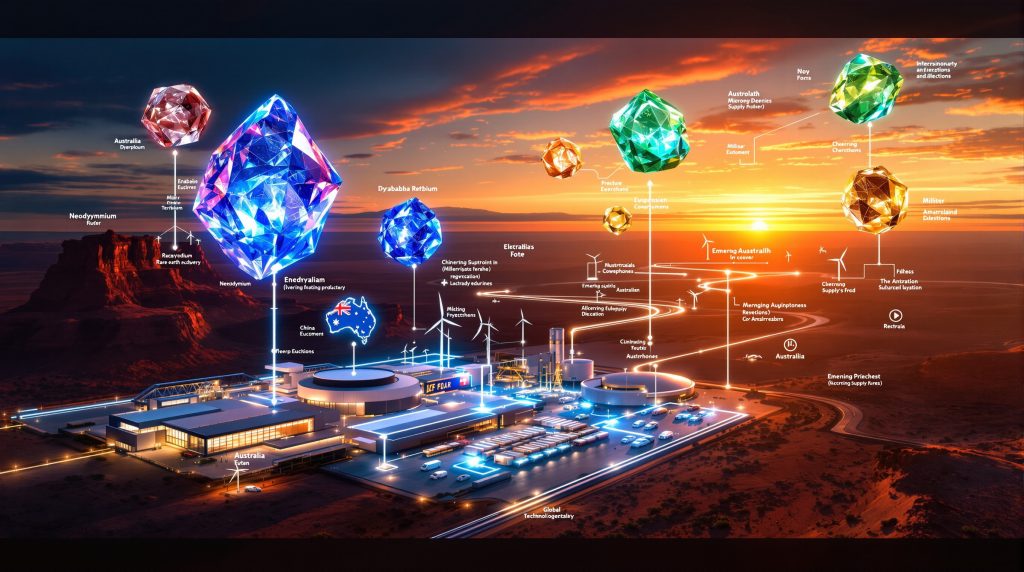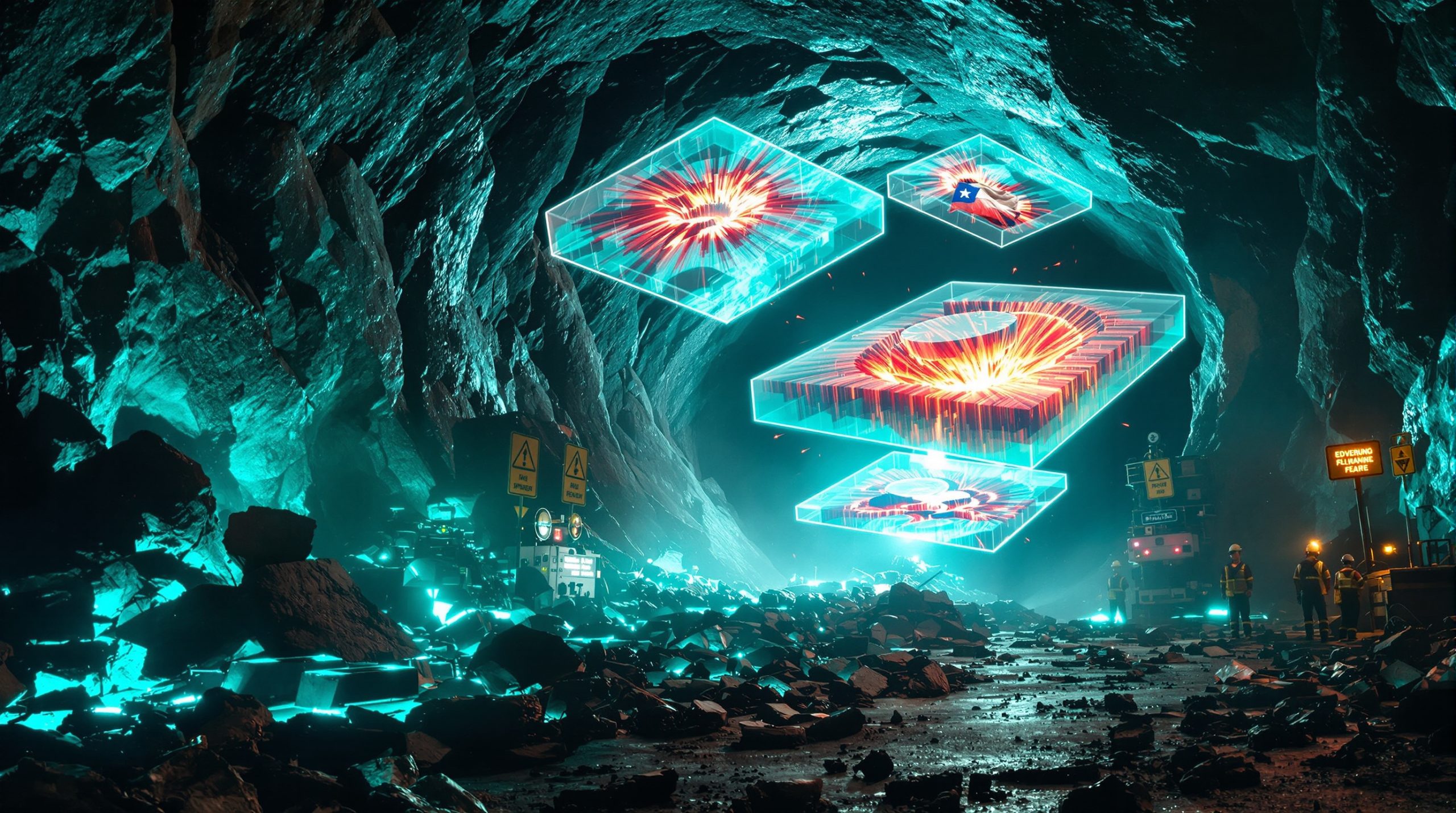What Are Rare Earth Elements and Why Do They Matter?
Rare earth elements may sound like exotic materials from science fiction, but they're actually critical components powering modern technology. Despite their name, these 17 elements are relatively abundant in the Earth's crust but rarely found in concentrated, economically viable deposits.
These elements—including neodymium, praseodymium, dysprosium, and terbium—possess unique magnetic, luminescent, and electrochemical properties that make them irreplaceable in high-tech applications. Their distinctive characteristics enable the manufacturing of everything from smartphones and electric vehicles to wind turbines and advanced military equipment.
The strategic importance of rare earths has grown exponentially as nations race toward renewable energy transitions and technological advancement. With applications spanning civilian technology to defense materials strategy, these elements have become critical to national security and economic development worldwide.
How Did China Gain Its "Chokehold" on Rare Earth Supply?
China's Decades-Long Investment Strategy
China's dominance in the rare earth sector represents the culmination of strategic foresight spanning decades. Since the 1980s, Chinese authorities recognized the strategic value of these elements long before other nations, investing heavily in research, development, and production capacity while Western countries largely overlooked these resources.
Through patient, consistent investment, China has established control over approximately 90% of global rare earth processing capacity. This dominance extends across the entire value chain—from mining and extraction to refining and manufacturing—creating an effective monopoly over resources critical to modern technology.
The 2010 Watershed Moment
The first major demonstration of China's market power occurred in 2010 during a territorial dispute with Japan. In a move that shocked global mining landscape, China suspended rare earth exports to Japan, creating immediate supply chain disruptions for Japanese manufacturers.
This incident served as a wake-up call for many nations, highlighting their vulnerability to supply disruptions. Japan responded by investing in Australian miner Lynas Rare Earths to secure alternative supplies, making Lynas the only significant non-Chinese producer of separated rare earth materials worldwide.
Market Manipulation Tactics
China has maintained its market dominance through various sophisticated tactics:
-
Flooding markets with supply when new competitors emerge, driving prices down and making rival operations unprofitable
-
Implementing export quotas and restrictions when strategically advantageous
-
Vertically integrating operations to control every stage of production
-
Subsidizing domestic producers to maintain price advantages
These practices have effectively deterred private investment in rare earth projects outside China, as companies face significant financial risks competing against state-backed enterprises. The economic warfare approach has been particularly effective against purely commercial operations that lack government support.
Why Is Australia Positioned to Challenge China's Dominance?
Australia's Rare Earth Resources
Australia possesses substantial rare earth deposits and is currently the world's fourth-largest producer. The country accounts for approximately 10% of global production, with projections suggesting this could increase to 20-25% by 2030 with proper investment and development.
Key Australian rare earth assets include:
-
Mount Weld mine: Operated by Lynas Rare Earths, this Western Australian mine contains some of the highest-grade rare earth deposits globally
-
Eneabba stockpile: A million-tonne resource of mineral sands containing valuable rare earth elements
-
Yangibana project: A high-grade deposit in Western Australia's Gascoyne region
-
Numerous exploration projects: Across Western Australia and the Northern Territory
The quality of Australian deposits, particularly the high concentration of valuable heavy rare earths, positions the country as a natural alternative supplier.
Strategic Government Intervention
The Australian government has recognized rare earths as critical minerals energy security and economic prosperity. Key initiatives include:
-
A $1.65 billion loan to Iluka Resources for constructing the Eneabba rare earths refinery
-
Development of a critical minerals reserve plan (due by end of 2026)
-
Consideration of price floor mechanisms to stabilize markets and encourage investment
-
Exploration of offtake agreements to secure demand for Australian production
These interventions aim to address market failures created by China's dominance and create conditions where private investment becomes viable, recognizing that purely market-based approaches are unlikely to succeed against state-backed competition.
What Makes Developing Rare Earth Supply Chains So Challenging?
Complex Processing Requirements
Despite their relative abundance, rare earth elements present significant extraction and processing challenges:
-
Rare earths typically occur together and must be separated through complex chemical processes
-
Individual elements have similar chemical properties, making separation technically difficult
-
Processing requires specialized expertise, equipment, and substantial energy inputs
-
Environmental management is complex due to radioactive elements often occurring alongside rare earths
These technical challenges have contributed to China's dominance, as the country developed expertise while accepting environmental impacts that other nations were unwilling to tolerate. The processing complexity creates significant barriers to entry for new market participants.
Economic Barriers to Entry
Beyond technical challenges, rare earth projects face significant economic hurdles:
| Economic Challenge | Description |
|---|---|
| Price volatility | Rare earth prices can fluctuate dramatically due to Chinese market interventions |
| High capital costs | Establishing mines and processing facilities requires substantial upfront investment |
| Long development timelines | Projects typically take 5-10 years from discovery to production |
| Return uncertainty | Investors face difficulty predicting long-term returns due to market manipulation |
These factors create a challenging investment environment that requires government support to overcome. Private capital alone has proven insufficient to establish competitive operations outside China due to these economic realities.
How Is Australia Building an Independent Rare Earth Supply Chain?
The Eneabba Refinery Project
At the heart of Australia's rare earth strategy is the Eneabba refinery being constructed by Iluka Resources in Western Australia. This facility represents a critical step in breaking China's processing monopoly.
Key aspects of the project include:
-
$1.65 billion government loan supporting construction
-
Capacity to process rare earth concentrates into separated individual elements
-
Expected completion by 2027
-
Initial feedstock from Iluka's million-tonne stockpile (valued at approximately $1 billion)
-
Long-term plan to process material from other Australian miners
The refinery aims to supply "like-minded western markets" building downstream manufacturing capacity, creating an alternative to Chinese-controlled supply chains. This processing capability is the missing link in establishing a viable non-Chinese supply chain.
Expanding Mining Operations
While processing capacity is crucial, Australia is also expanding its rare earth mining operations:
-
Lynas Rare Earths is investing $345 million to increase production capacity at Mount Weld by 50%
-
The Yangibana project could be operational within 18 months with additional investment of $350 million
-
Numerous exploration projects are advancing toward development decisions
-
Research initiatives are exploring new extraction technologies for clay-hosted deposits
These developments could significantly increase Australia's production capacity over the next decade, providing the raw materials needed to feed the new processing infrastructure being developed.
What Role Could Price Stabilization Play?
The Floor Price Concept
One approach being considered by the Australian government is establishing a floor price for specific rare earth elements. This mechanism would:
-
Provide price stability when markets are depressed
-
Allow producers to maintain operations during downturns
-
Include repayment provisions when prices rise above certain thresholds
-
Create conditions where private investment becomes viable
This approach follows similar initiatives in the United States, where the government has implemented programs to support domestic rare earth production. The goal is to prevent market manipulation from undermining the viability of Australian operations.
Strategic Reserve Development
The Australian government's Critical Minerals Strategic Reserve plan, due by the end of 2026, may incorporate various market stabilization mechanisms:
-
Virtual or physical stockpiles of critical materials
-
Offtake agreements guaranteeing purchases at specified prices
-
Price floors with appropriate exit mechanisms
-
Coordination with international partners to create demand certainty
Resources Minister Madeleine King has indicated these interventions would aim to "bring stability to the market of rare earths and critical minerals" while ensuring taxpayer interests are protected. The approach recognizes that market forces alone are insufficient against state-backed competition.
How Would an Australian Supply Chain Benefit Global Security?
Defense Applications
Rare earth elements are essential components in advanced defense systems:
-
Virginia-class submarines require rare earth magnets for various systems
-
Fighter jets use rare earths in radar systems, guidance components, and electronic warfare equipment
-
Precision-guided munitions rely on rare earth elements for accuracy
-
Night vision equipment utilizes rare earth phosphors
Establishing supply chains independent from potential adversaries is increasingly viewed as a national security imperative by Western nations. The US-China trade war impact has further highlighted the defense applications alone justify government investment in secure supply chains.
Geopolitical Implications
Australia's emergence as an alternative supplier could have significant geopolitical implications. International trade and geopolitics expert Naoise McDonagh from Edith Cowan University notes that Australia's future in rare earths depends on partner nations' willingness to pay premium prices for Australian production.
This partnership approach would require coordination between Australia and allied nations to create sustainable demand for non-Chinese production, potentially reshaping global supply chains. The security benefits may justify higher costs compared to Chinese alternatives, particularly for defense applications.
What Are the Risks and Challenges Ahead?
Investment Uncertainty
Despite government support, significant challenges remain:
-
Uncertainty about whether investments will yield expected returns
-
Need for international coordination to create sustainable demand
-
Potential for continued Chinese market manipulation
-
Technical challenges in scaling processing capacity
As international trade expert Naoise McDonagh observes, while Australia is solving the supply side of the equation, the demand side remains uncertain. Success depends on securing commitments from partner nations to support Australian production through premium pricing or guaranteed purchases.
Balancing Commercial and Strategic Interests
The development of Australia's rare earth industry requires balancing commercial and strategic considerations:
-
Private investors require reasonable returns on investment
-
Government support must represent value for taxpayers
-
Premium pricing may be necessary to sustain non-Chinese supply chains
-
Environmental standards must be maintained while remaining competitive
This balancing act represents a significant policy challenge for the Australian government. The strategic imperatives must be weighed against commercial realities, with appropriate risk-sharing between public and private sectors.
What Does the Future Hold for Australia's Rare Earth Industry?
Near-Term Developments
Several key milestones are expected in the coming years:
-
Completion of the Eneabba refinery by 2027
-
Finalization of the Critical Minerals Strategic Reserve plan by end of 2026
-
Potential development of the Yangibana project within 18 months
-
Expanded production at Mount Weld following capacity investments
These developments will significantly enhance Australia's position in global rare earth markets, creating the foundation for a viable alternative supply chain outside Chinese control.
Long-Term Vision
Australia's long-term vision is to become the world's alternative supplier of refined rare earth products. Resources Minister Madeleine King articulates this ambition as Australia taking up "the responsibility to lead on rare earths and critical minerals globally" to become "the alternative supplier."
Achieving this vision would transform global supply chains, enhance security for Western nations, and create significant economic opportunities for Australia. The strategic importance of rare earths makes this a national priority with implications far beyond the mining sector.
How Can Australia Maximize Its Rare Earth Potential?
International Partnerships
Developing successful partnerships with like-minded nations will be crucial:
-
Coordinating with the United States, Japan, and European Union on offtake agreements
-
Aligning research and development efforts to reduce processing costs
-
Establishing common standards for environmentally responsible production
-
Creating financing mechanisms that share risks appropriately
These partnerships could create the demand certainty needed to sustain Australia's emerging industry. The security benefits for all participating nations provide a strong foundation for collaboration.
Technological Innovation
Continued investment in research and technology development will be essential:
-
Improving separation efficiency to reduce processing costs
-
Developing environmentally superior extraction methods
-
Creating recycling technologies to recover rare earths from end-of-life products
-
Exploring substitution possibilities where appropriate
These innovations could enhance Australia's competitive position while addressing environmental concerns. Technological advances may eventually reduce the cost premium for non-Chinese production, making the alternative supply chain more commercially viable.
Disclaimer: This article contains forward-looking statements and predictions about market developments. These represent current assessments and are subject to change as geopolitical and market conditions evolve. Readers should conduct their own research before making investment or policy decisions based on this analysis.
Want to Get Ahead of the Next Rare Earth Investment Opportunity?
Discovery Alert's proprietary Discovery IQ model provides real-time notifications when significant rare earth discoveries are announced on the ASX, helping you identify potential investment opportunities before the broader market. Visit our discoveries page to see how major mineral findings have historically generated substantial returns for early investors.




